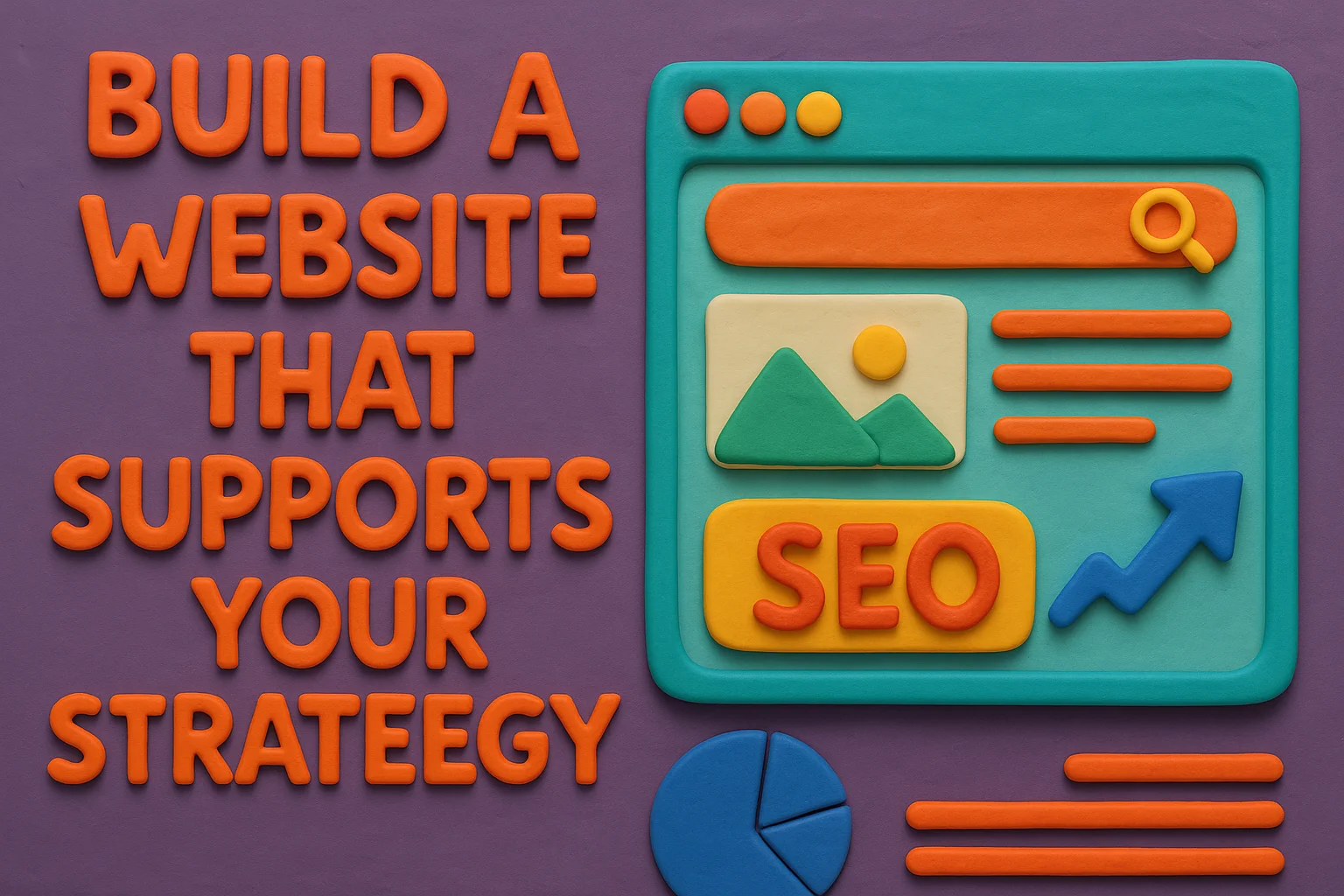You can write all the optimized content you want. Build all the backlinks. Research all the keywords. But if your website wasn’t built with SEO in mind, you’re leaving traffic—and revenue—on the table. Your website is the foundation of your SEO strategy. If it’s slow, unstructured, or hard to crawl, even the best content won’t perform. That’s why true SEO success starts with thoughtful, strategic web design.
In this post, we’ll break down how to build (or rebuild) a website that actually supports your SEO goals—both now and in the long term.
Why Your Website Matters to SEO Strategy
Search engine optimization isn’t just about keywords—it’s about making your entire site easy for search engines to understand and users to navigate.
A website that supports your SEO strategy:
✅ Loads fast
✅ Renders well on mobile
✅ Has clean code and structure
✅ Uses internal linking and a logical page hierarchy
✅ Offers high-quality, indexable content
Think of your website as your SEO engine. If the foundation is broken, you won’t go far—no matter how much fuel you add.
Step 1: Start with a Scalable Site Architecture
A strong site architecture makes it easy for both users and search engines to find what they need.
Best Practices:
- Plan your pages around key topics and keyword clusters
- Use a flat structure—no important content should be more than 3 clicks deep
- Implement clean, SEO-friendly URLs (e.g.,
/services/ppc-management/not/page?id=48) - Include breadcrumb navigation for context and UX
📘 Bonus: Google uses internal links and hierarchy to understand your site’s topical authority.
Step 2: Build for Speed and Mobile-First Performance
Speed and mobile usability are both direct Google ranking factors—and user expectations have never been higher.
How to Optimize:
- Compress images and use next-gen formats like WebP
- Use responsive design, not just mobile breakpoints
- Eliminate render-blocking scripts
- Use a content delivery network (CDN)
- Minimize HTTP requests
📈 Read more: The SEO Impact of Website Speed and How to Improve It
Step 3: Prioritize Technical SEO from Day One
A strong SEO foundation requires more than good content—it requires clean, crawlable code and structure.
Essentials to Include:
- Proper H1–H6 hierarchy
- Schema markup for content types (articles, products, services)
- Canonical URLs to prevent duplicate content
- XML sitemap and robots.txt
- HTTPS and secure hosting
📘 Learn more: What Is Technical SEO? A Simple Guide for Non-Tech Marketers
Step 4: Optimize Your Core Pages for Search
Once the foundation is solid, you need content that targets the right keywords and speaks to search intent.
Must-Have Pages:
- Service or product pages (target high-intent keywords)
- Blog or resource hub (for long-tail SEO and authority building)
- About and contact pages (help establish trust signals)
- FAQs, case studies, or comparison pages (rank well for “vs,” “best,” and “how to” searches)
📚 Read: How Blogging Drives Organic Traffic: Real Data, Real Results
Step 5: Implement Strategic Internal Linking
Internal links distribute authority across your site and help Google understand relationships between pages.
Best Practices:
- Link from blog posts to relevant service pages
- Use keyword-rich anchor text naturally
- Keep navigation consistent across the site
- Use siloing to group related content by topic
🔗 Bonus: Internal links also reduce bounce rates by guiding users deeper into your content.
Step 6: Don’t Forget About Conversion
Traffic without action is just noise. Make sure your site is designed to convert SEO visitors into leads or customers.
Conversion Optimization Tips:
- Add clear, compelling CTAs throughout pages
- Use sticky navs and buttons for key actions
- Create landing pages that align with search intent
- Optimize forms for simplicity and mobile
💡 Read: Why Your Website Isn’t Converting (And How to Fix It)
How Twofold Builds Websites That Power SEO Strategy
At Twofold, we design and develop websites that are built to rank, convert, and scale.
When you work with us, you get:
✅ Strategic site mapping aligned to your SEO goals
✅ Core Web Vitals optimization
✅ Clean, crawlable code and schema integration
✅ On-page optimization and internal linking
✅ SEO-friendly CMS setups for easy publishing
👉 Let’s Build a Website That Works for SEO—and for You
Final Thoughts on SEO Strategy
A winning SEO strategy starts with a website that’s fast, structured, and built with purpose. You can’t bolt SEO on after the fact—it needs to be baked in from the beginning.
If your site isn’t ranking, converting, or growing—it might be time to rebuild the foundation.
Partner with Twofold and Build a Website That Supports Real Growth
